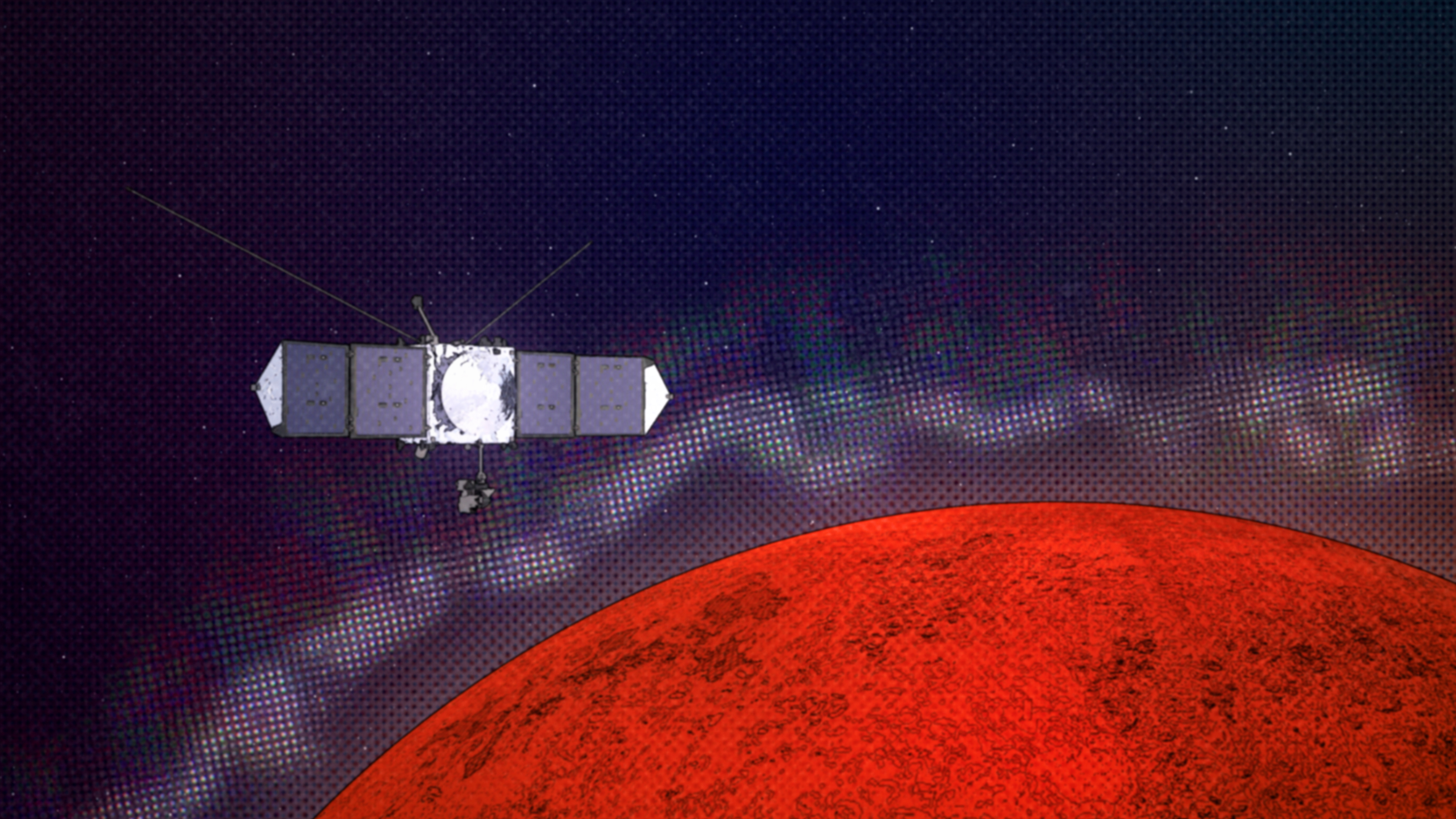Discovery of 'rifts' and 'layers' above Mars may aid radio communications on Earth
A NASA probe at Mars made a finding that could help scientists better understand radio interference at Earth.
The Mars Atmosphere and Volatile EvolutioN (MAVEN) spacecraft found structures in the ionosphere — an electrically charged zone of the upper atmosphere — at the Red Planet. Similar atmospheric structures on Earth are known to cause problems with radio communications.
MAVEN uncovered two types of structures in the Martian ionosphere: "layers" and "rifts." Both of these structures also occur in Earth's ionosphere, where they can interfere with local and long-distance transmissions.
Related: Photos: NASA's MAVEN mission to Mars
Layers refer to areas where electrically charged plasma builds up in, well, layers. These formations often form suddenly and persist for hours, reflecting radio signals like light reflects off a mirror. Scientists have known of layers in Earth's atmosphere for more than 80 years, according to NASA, but these layers are at an altitude that makes them inconvenient to study. The layers form at about 60 miles (100 kilometers) high, where the air is too thin for aircraft, yet too thick for satellites to remain in orbit. Scientists attempt to study these layers with sounding rockets, which fly for only a few dozen minutes before falling back to Earth, but that's hardly a satisfying approach.

Fortunately, Mars has a thinner atmosphere than Earth — which permits MAVEN to orbit at a lower altitude and see these layers from a closer vantage point. The spacecraft found spikes in plasma in certain spots in the Martian ionosphere, similar to what was recorded at Earth during sounding rocket flights.
"The layers are so close above all our heads at Earth, and can be detected by anyone with a radio, but they are still quite mysterious," lead author Glyn Collinson, a research associate at NASA's Goddard Space Flight Center in Maryland, said in a NASA statement. "Who would have thought one of the best ways to understand them is to launch a satellite 300 million miles [482 million km] to Mars?"
Get the Space.com Newsletter
Breaking space news, the latest updates on rocket launches, skywatching events and more!
"The low altitudes observable by MAVEN will fill in a great gap in our understanding of this region on both Mars and Earth, with really significant discoveries to be had," co-author Joe Grebowsky, a former MAVEN project scientist at Goddard, said in the same statement. Grebowsky was the one who recognized the Martian spikes as being similar to the plasma spikes observed by sounding rockets at Earth.
The other phenomenon, rifts, happen in zones where plasma is less abundant than in the surrounding atmosphere on Mars. MAVEN is the first to find such rifts at Mars, and the spacecraft's discovery overturns past models that suggested rifts could not exist in the Red Planet's atmosphere. Why the rifts are there is still poorly understood, along with the mechanism behind another surprise — the Martian rifts last longer than those on Earth.
A paper based on the research was published Feb. 3 in the journal Nature Astronomy.
- The decade of Mars: How the 2020s may be a new era of Red Planet exploration
- Earth's colorful atmospheric layers photographed from space
- MAVEN launch photos: NASA Mars orbiter launches toward Red Planet
Follow Elizabeth Howell on Twitter @howellspace. Follow us on Twitter @Spacedotcom and on Facebook.

Join our Space Forums to keep talking space on the latest missions, night sky and more! And if you have a news tip, correction or comment, let us know at: community@space.com.

Elizabeth Howell (she/her), Ph.D., was a staff writer in the spaceflight channel between 2022 and 2024 specializing in Canadian space news. She was contributing writer for Space.com for 10 years from 2012 to 2024. Elizabeth's reporting includes multiple exclusives with the White House, leading world coverage about a lost-and-found space tomato on the International Space Station, witnessing five human spaceflight launches on two continents, flying parabolic, working inside a spacesuit, and participating in a simulated Mars mission. Her latest book, "Why Am I Taller?" (ECW Press, 2022) is co-written with astronaut Dave Williams.
-
Roger_W8IO It would be interesting to see what kind of HF and VHF propagation is on Mars. Maybe the next few Mars missions should have multi-frequency WSPR transmitters and receivers!Reply
https://en.wikipedia.org/wiki/WSPR_(amateur_radio_software)









